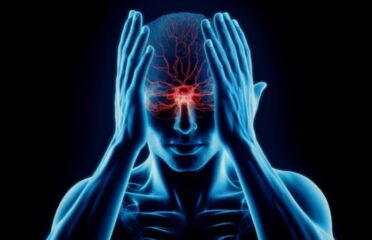Whiplash
Overview

Whiplash is a type of neck injury caused by sudden backward and forward movement of the head, which can damage bones, discs, ligaments, muscles, and nerves in the neck.
Although commonly associated with car accidents, whiplash can also result from sports injuries, falls, or other traumatic events.
The wide range of causes highlights the prevalence of whiplash in various situations involving sudden head movement. It is essential to understand the diverse origins of this injury to provide accurate diagnosis and treatment methods tailored to the individual.
Symptoms
Whiplash, resulting from a sudden and forceful movement of the neck, manifests in a range of symptoms:
• Neck Pain and Stiffness: Discomfort and restricted movement in the neck are common symptoms.
• Headaches: Headaches, typically originating from the base of the skull, often accompany whiplash.
• Fatigue: Generalized tiredness and fatigue may be experienced.
• Dizziness or Vertigo: Sensations of lightheadedness or spinning indicate possible vestibular involvement.
• Shoulder and Back Pain: Pain may extend to the shoulders and back, reflecting the impact on the surrounding musculature.
• Tingling or Numbness in Arms: Peripheral nerve involvement may lead to tingling or numbness in the arms.
Causes & Risks
• Sudden Forceful Head Movement: Whiplash is often triggered by a sudden and forceful movement of the head.
• Common Causes: Typical causes include car accidents, especially rear-end collisions, sports injuries, and instances of physical abuse.
• Age-Related Risk: Older adults are more susceptible to whiplash, making age a significant risk factor.
• History of Neck Injuries: Individuals with a previous history of neck injuries face an elevated risk of experiencing whiplash.
• Occupational and Activity Risks: Certain occupations or activities that increase the likelihood of accidents contribute to the overall risk profile for whiplash.
• Preventive Awareness: Recognizing the diverse causes and risk factors is crucial for preventive measures, accurate diagnosis, and tailored management of individuals affected by whiplash.
Test & Diagnosis
• Physical Examination: A thorough physical examination is conducted to assess symptoms, examine neck movement, and identify signs indicative of whiplash injury.
• Medical History Review: A detailed review of the patient's medical history helps in understanding pre-existing conditions, previous injuries, and contextual factors that may contribute to the whiplash diagnosis.
• Imaging Tests (X-rays, CT Scans, MRI): Utilizing advanced imaging techniques such as X-rays, CT scans, or MRI, healthcare professionals assess the extent of damage to neck structures, providing detailed insights into soft tissue injuries and potential complications.
• Objective Assessment: The combination of physical examination and imaging tests ensures a more objective and comprehensive evaluation, enhancing diagnostic accuracy.
• Tailored Treatment Planning: Accurate diagnosis aids in tailoring effective treatment plans, addressing specific injuries and symptoms associated with whiplash.
• Holistic Patient Care: The integrated approach ensures a holistic understanding of the injury, facilitating informed decision-making and personalized care for individuals diagnosed with whiplash.
Treatment
Whiplash is a common injury that can cause pain and discomfort in the neck, shoulders, and back. Here are some of the treatment options available for whiplash:
• Rest and Pain Management: Rest is the initial step in treating whiplash as it allows the body to heal naturally. Pain medications can also be used to alleviate discomfort and promote recovery.
• Physical Therapy: Physical therapy is a crucial part of the recovery process for whiplash. It helps to restore neck mobility, strength, and flexibility, addressing the specific needs of individuals recovering from whiplash.
• Supportive Measures: Depending on the severity of the injury, a neck brace or collar may be recommended to provide additional support and aid in healing.
• Advanced Interventions: In severe cases, advanced interventions such as targeted injections or surgical procedures may be required to address specific complications or persistent symptoms.
• Individualized Approach: Treatment plans for whiplash are tailored to each patient's unique circumstances, considering the injury's extent and individual response to various interventions.
• Rehabilitation Focus: The treatment approach for whiplash aims to restore optimal function, reduce pain, and enhance the overall well-being of individuals recovering from whiplash injuries.
Living With
Navigating life with whiplash requires a proactive approach centered on symptom management through a blend of medication, targeted physical therapy exercises, and lifestyle modifications.
Adhering to medical advice and attending follow-up appointments are pivotal in optimizing recovery. Individuals with whiplash should actively engage in prescribed therapies to alleviate symptoms while incorporating lifestyle adjustments that promote overall well-being.
This comprehensive strategy empowers individuals to effectively address the challenges associated with whiplash, promoting a healthier and more resilient lifestyle.
Individuals can enhance their quality of life by prioritizing ongoing care, embracing recommended interventions, and gradually regaining optimal physical function.
Complications
• Whiplash injuries can result in persistent pain challenges, which may have a significant impact on an individual's daily activities and overall quality of life.
• These complications can include chronic neck pain, recurring headaches, and long-term structural damage to neck structures such as ligaments, discs, and nerves, which can affect mobility.
• Additionally, emotional challenges such as anxiety and depression may arise as a result of sustained pain and impairment.
• Moreover, neurological consequences can emerge, leading to complications in sensory and motor functions.
• Therefore, it is crucial to adopt comprehensive management strategies to address these challenges and improve the overall well-being of individuals affected by whiplash.





